Consult with our experts to pick your prefect rug delivered to your door step.
Or start with the one closest to your desire from our catalogue, we will provide you with all the possible options
Showing 1–9 of 507 resultsSorted by popularity
Or start with the one closest to your desire from our catalogue, we will provide you with all the possible options
Ghashghai rugs come from the Qashqai tribal confederation in southwestern Iran, known for their vivid, natural expressions of nomadic heritage. The Qashqai people, who traditionally lived in tents and moved seasonally, wove these rugs primarily for domestic use. Over generations, their weaving technique has been passed down, preserving a distinct style that remains authentic to Qashqai traditions.
Ghashghai rugs are believed to have emerged as a unique category within Persian carpets when the Qashqai began incorporating a bold use of color and a slightly more geometric aesthetic, reflecting the environmental and cultural influences of their mountainous nomadic life. Today, these rugs continue to be woven using age-old methods, making each piece not only a functional item but also a testament to the enduring heritage of the Qashqai people.
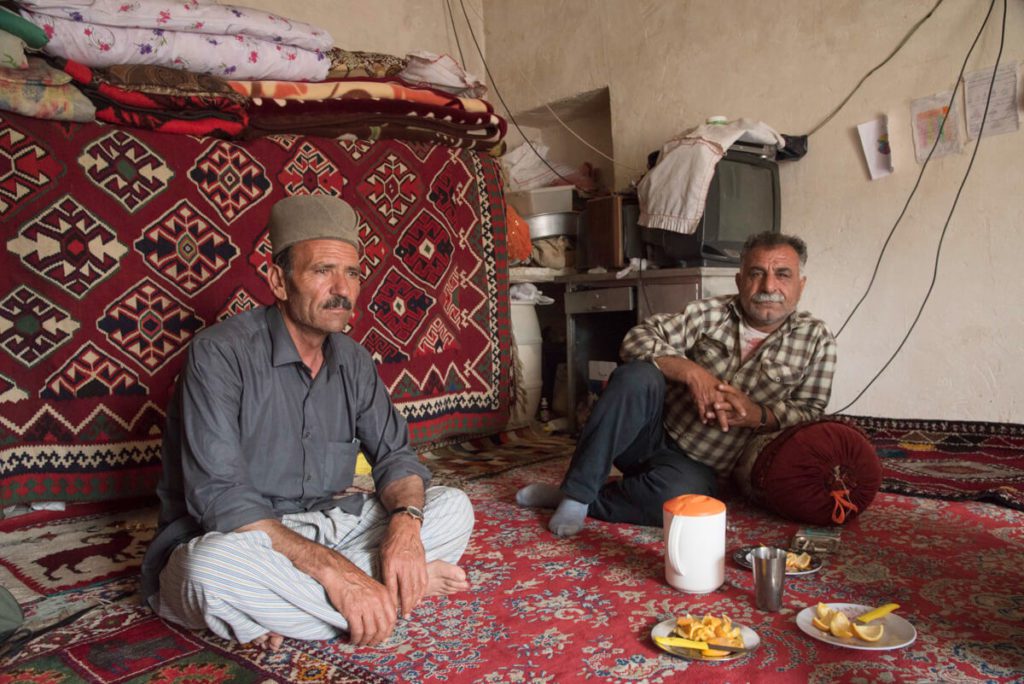
Ghashghai rugs are notable for their vivid, earthy hues and a design that often emphasizes both symmetry and spontaneity. The designs typically include a mix of geometric patterns and abstract motifs that suggest traditional Qashqai symbols, often inspired by nature – such as stylized flowers, leaves, and occasionally animal figures. A key feature is the use of a horizontal loom, which gives Ghashghai rugs a slightly different texture compared to other hand-knotted Persian carpets.
Unlike city-made rugs, which are highly intricate, Ghashghai patterns tend to be more robust and simpler in their repeatability, making them both eye-catching and durable. The color palette usually centers on reddish-brown, deep maroons, and rust tones, often paired with shades of blue, beige, or green. This strong, natural palette is achieved using traditional dyes, and the contrasts create a dynamic visual interplay across the rug. Borders are usually less elaborate, focusing on clean, continuous lines that frame the central motifs effectively. The overall effect is a design that is bold yet unpretentious, perfectly reflecting the practical beauty of nomadic life.
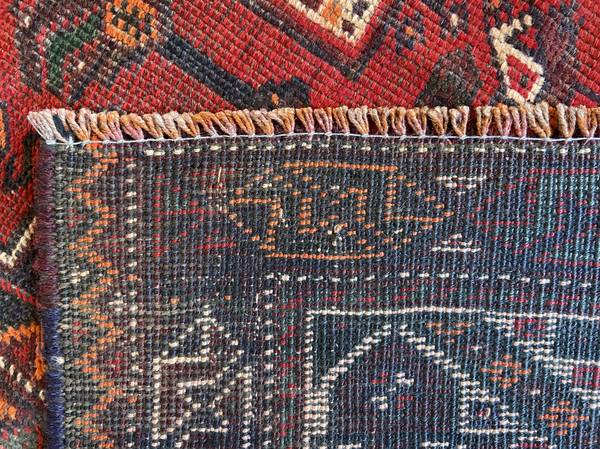
Ghashghai rugs are typically made from high-quality sheep’s wool, which is known for its durability and natural luster. The wool is hand-spun and dyed using traditional natural dyes, giving each rug a unique and rich color profile. The foundations are usually made of cotton, which provides a sturdy base for the weave. The knotting technique follows traditional Persian methods – predominantly using the asymmetric (Persian) knot – although some Ghashghai pieces may also feature the symmetric (Turkish) knot depending on the region’s influence.
Knot densities are moderate to high, ensuring detailed yet robust designs that can withstand everyday use. The weaving is done on horizontal looms, resulting in a slightly different texture that is often denser and has a distinctive pile quality. Ghashghai rugs are prized not only for their aesthetic appeal but also for their practicality: the heavy wool and firm knotting create a rug that is exceptionally resilient, making it suitable for high-traffic areas in a home.
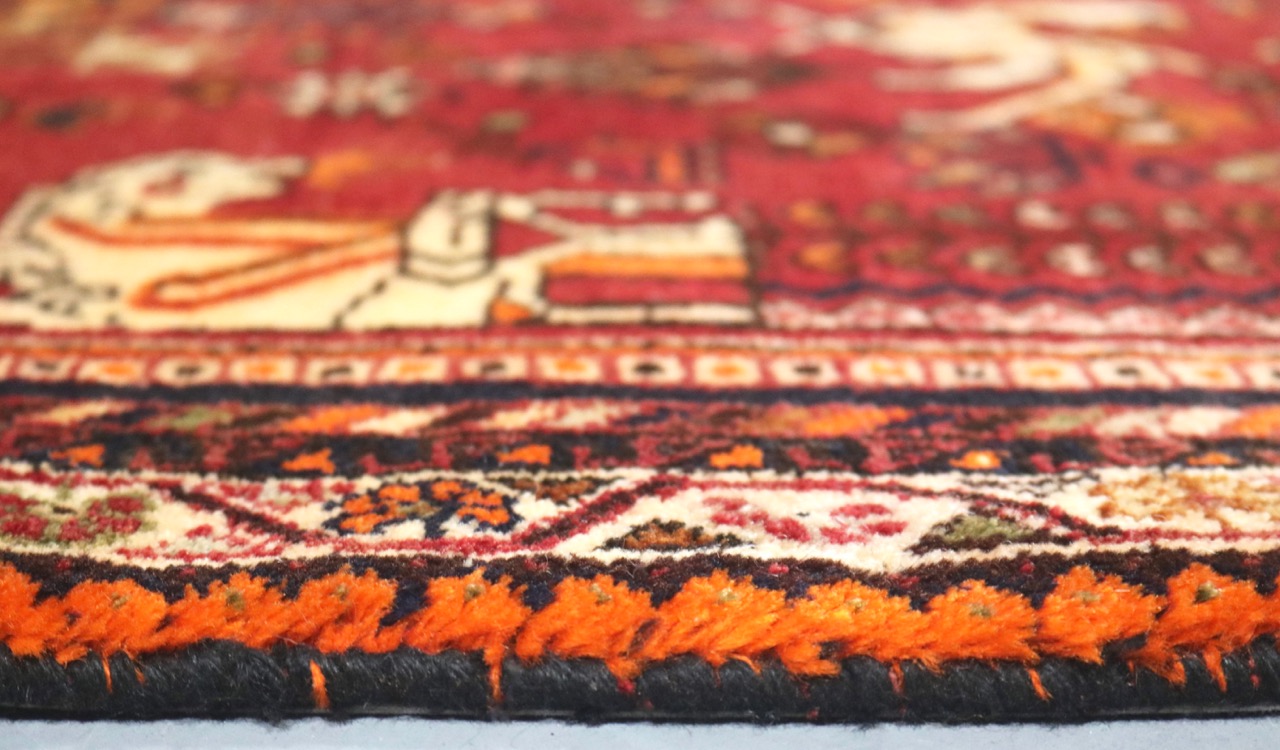
Ghashghai rugs are incredibly versatile and can be used in both traditional and modern settings. Their robust construction makes them ideal for high-traffic areas such as living rooms, dining rooms, and hallways. In more formal settings, a Ghashghai rug can serve as the centerpiece of a room, complementing antique furniture or classic decor styles with its rich, natural color palette.
On the other hand, in modern, minimalist interiors, the bold yet straightforward designs of Ghashghai rugs add a touch of warmth and character without overwhelming the space. They are particularly well-suited for rooms where durability is a priority – for instance, in busy family rooms or even in office settings where a resilient, attractive rug is required. The texture and colors of Ghashghai rugs can also harmonize well with rustic or eclectic furnishings, making them a great choice for creating a dynamic yet cozy environment.
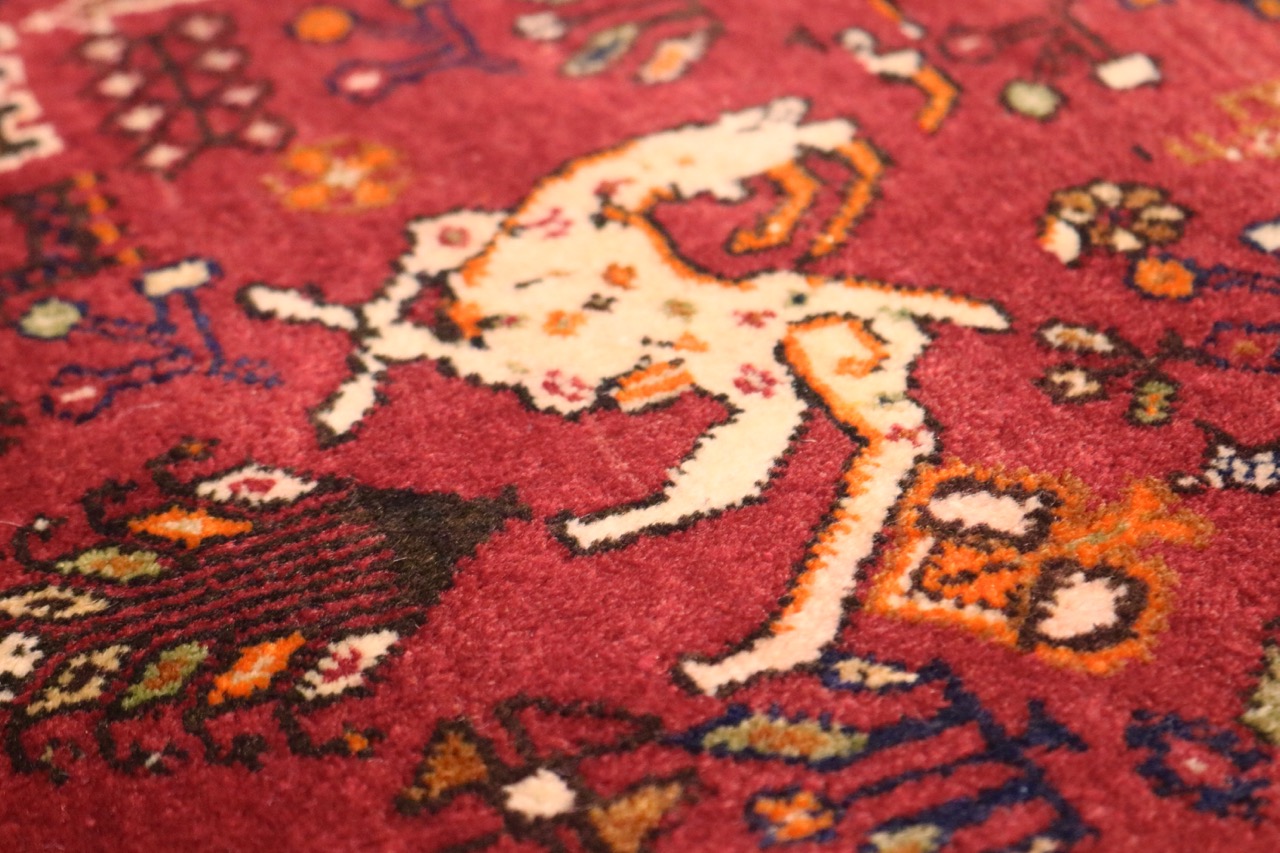
Ghashghai rugs generally fall into the mid-range price bracket within the Persian rug market. Their value is driven by the combination of traditional craftsmanship, robust materials, and the distinctive, vibrant designs that set them apart. The price of a Ghashghai rug depends on its size, age, and intricacy: larger pieces or antique examples with higher knot densities can be more expensive, while modern, smaller Ghashghai rugs are often more budget-friendly.
Buyers appreciate that these rugs offer both aesthetic beauty and practical durability – they are designed to last through years of daily use. Because of their solid construction and timeless appeal, Ghashghai rugs are often considered a sound investment for those who want a rug that is both visually striking and reliable.
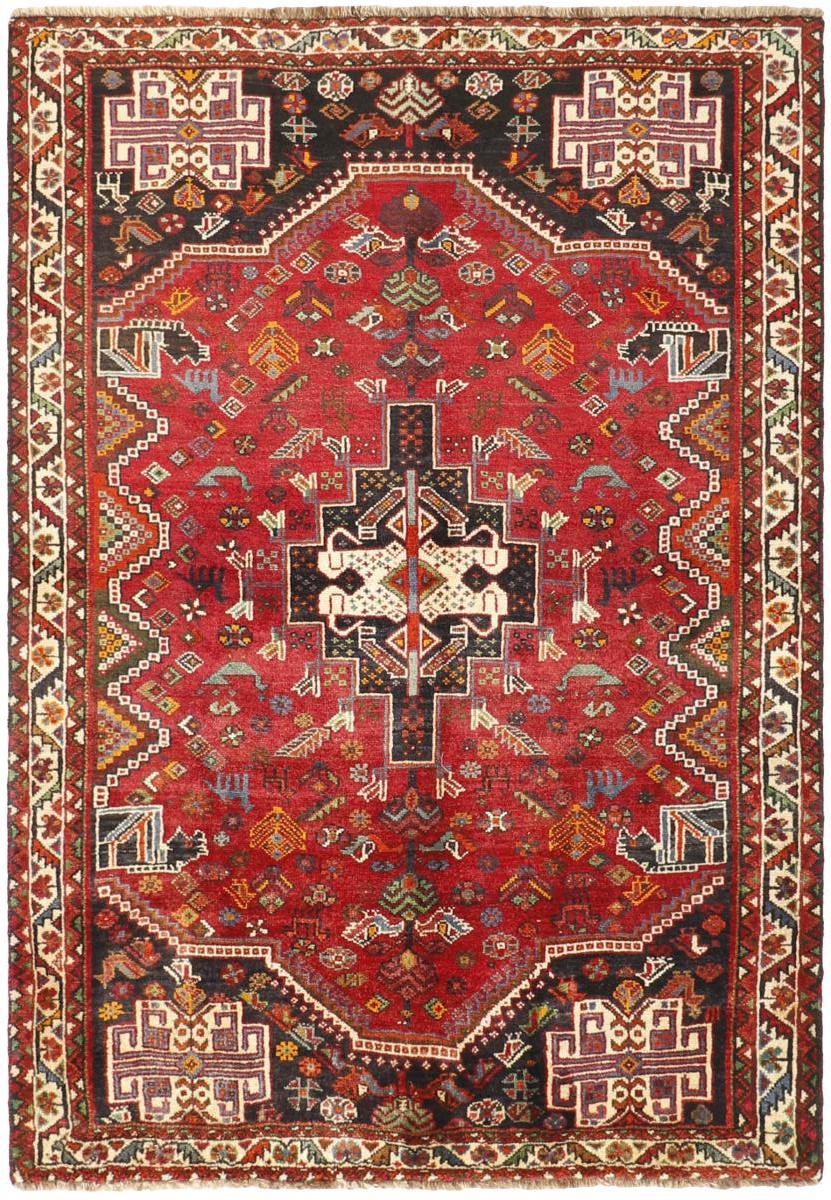
Buying a Ghashghai rug means investing in a piece of Persian artistry that marries rich cultural heritage with everyday practicality. For buyers looking to shop for Persian carpets online, keywords like “buy Ghashghai rug” or “durable Qashqai carpet” are popular search terms, as these rugs are known for their strength and striking appearance. Ghashghai rugs are especially appealing if you want a rug that can handle the rigors of everyday life without sacrificing style.
Their vibrant color palette and robust design are perfect for creating a warm, inviting atmosphere in your home, whether it’s in a busy living room or a serene bedroom. Additionally, their blend of traditional craftsmanship and modern aesthetic makes them versatile enough to fit into a variety of decor styles. With a Ghashghai rug, you’re not just purchasing a floor covering – you’re acquiring a piece of cultural history that promises longevity and consistent beauty.
To ensure your Ghashghai rug remains in excellent condition, follow these care practices:
Regular Vacuuming: Vacuum the rug weekly using a gentle setting to remove dust and prevent dirt from embedding in the dense pile. Be cautious around the edges to maintain the integrity of the fringe.
Rug Rotation: Rotate the rug 180° every 6 to 12 months to ensure even wear, especially if one part of the rug is exposed to more sunlight or foot traffic.
Spot Cleaning: Promptly blot any spills with a clean, damp cloth to prevent stains. Avoid rubbing, as this can damage the fibers.
Avoid Excessive Moisture: Although wool is relatively resilient, prolonged exposure to moisture can lead to mildew. If cleaning, do not saturate the rug; use a mild cleaning solution sparingly.
Use a Rug Pad: A high-quality rug pad underneath can help maintain the rug’s shape and protect it from sliding, reducing wear from foot traffic.
Professional Cleaning: Consider professional cleaning every few years, particularly for large or high-traffic Ghashghai rugs. This will help remove deep-seated dirt and preserve the rug’s vibrant colors. By following these tips, your Ghashghai rug will continue to add beauty and resilience to your space for many years.
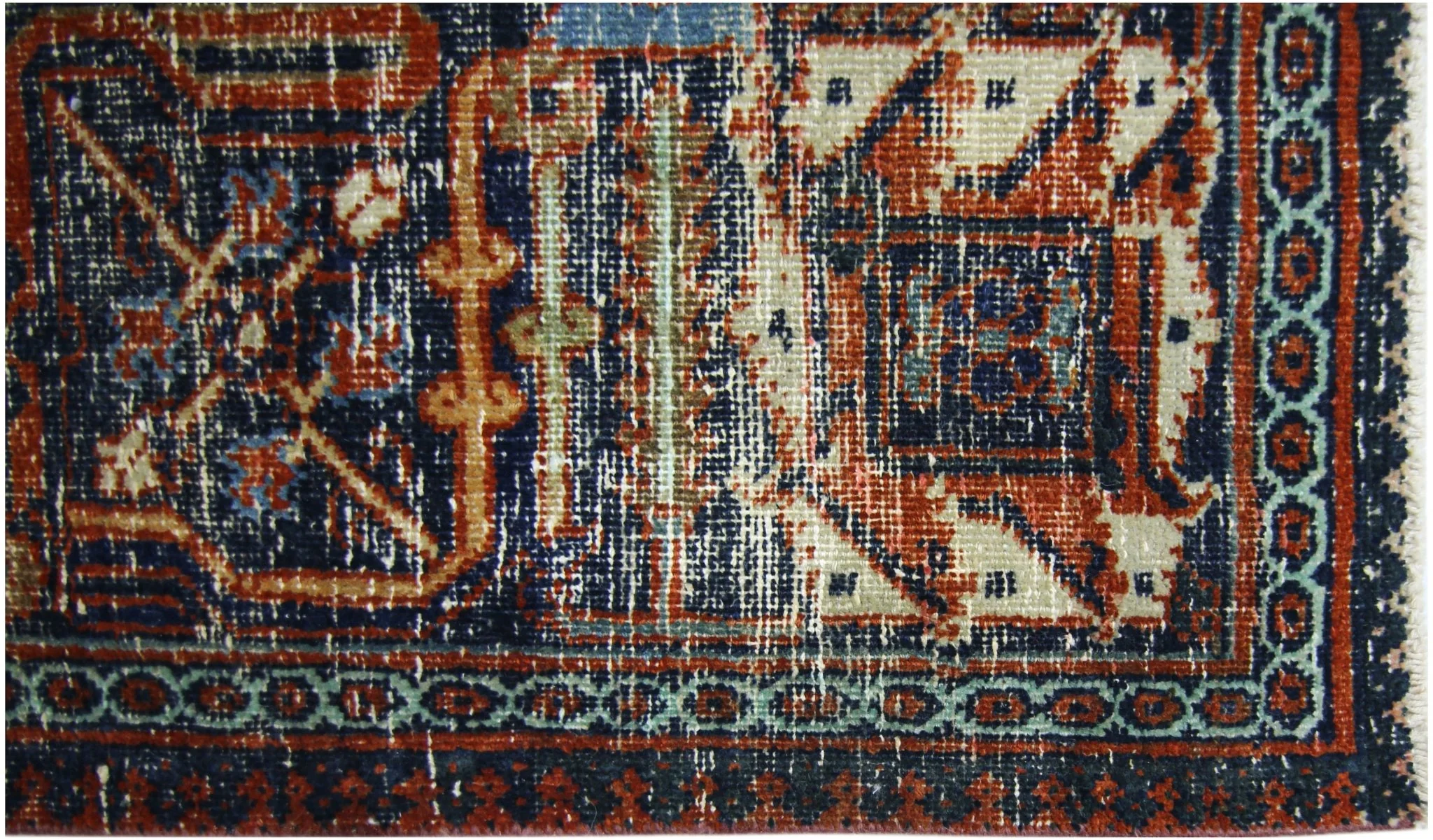
Ghashghai rugs work beautifully in several settings:
Traditional Living Rooms: Their rich, earthy tones make them an excellent choice for a classic Persian living room, where they can complement ornate wooden furniture and soft, plush sofas.
Modern Interiors: In contemporary spaces with minimalist decor, a Ghashghai rug can serve as a bold accent piece. Its natural hues and geometric motifs offer a striking contrast to clean, modern lines.
Family Rooms and High-Traffic Areas: Given their durability, Ghashghai rugs are perfect for areas that see a lot of use – hallways, dining rooms, and entryways can benefit from the rug’s robust construction.
Home Offices: For a professional yet warm setting, consider placing a Ghashghai under an office desk or conference table. The rug’s resilient design ensures it stands up to frequent movement and occasional spills.
Cultural or Rustic Themes: Ghashghai rugs can also enhance spaces designed with cultural or rustic themes, where their traditional patterns and rich color palette evoke a sense of history and comfort. The versatility of a Ghashghai rug means it can be the perfect finishing touch in various environments, ensuring that wherever it is placed, it enhances the overall ambiance and provides enduring style.
As a family-owned Persian carpet shop, we bridge the gap between passionate collectors and skilled weavers, supporting both the artistry and the heritage of this timeless craft.
We guarantee fair prices for Original Authentic Persian Carpets
Address:
Shop No-GD 04, Dragon Mart 2 –
Dubai – United Arab Emirates
No.36 – 10th st. – Hafez Ave. –
Shiraz , Iran
Block 19 – Kooye Mohandesan –
Kish Island, Iran
Email info@letsgopersian.com
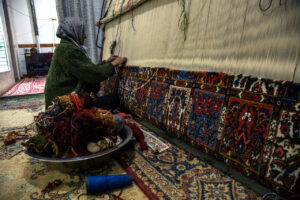
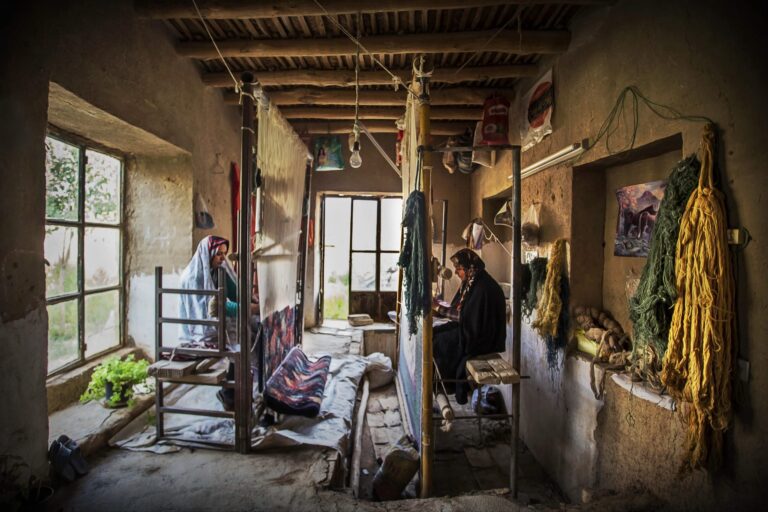
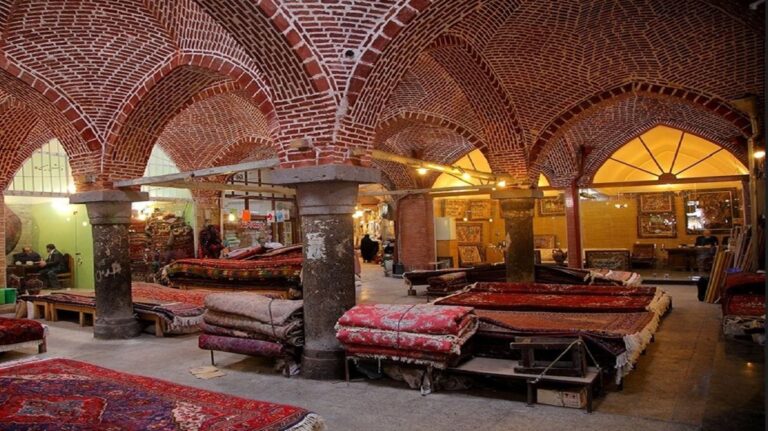
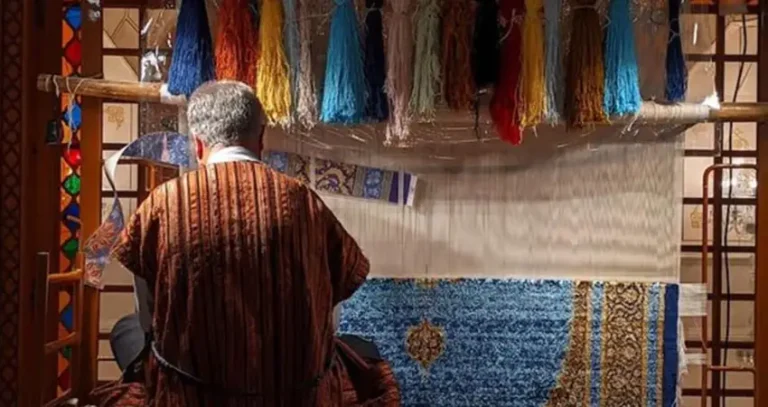
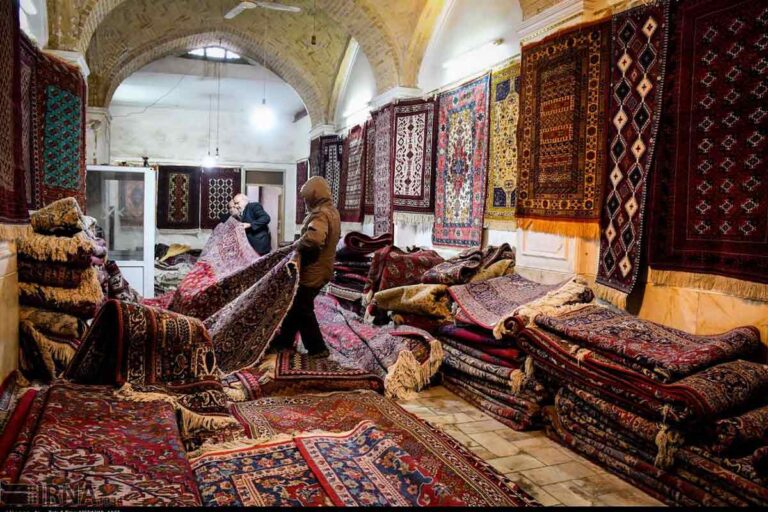
We bring you not just a carpet, but a masterpiece with a story — directly from the hands of Iranian artists to your home.
By working directly with artisans, we help preserve centuries-old traditions while offering our customers a chance to own a unique piece of original cultural heritage.